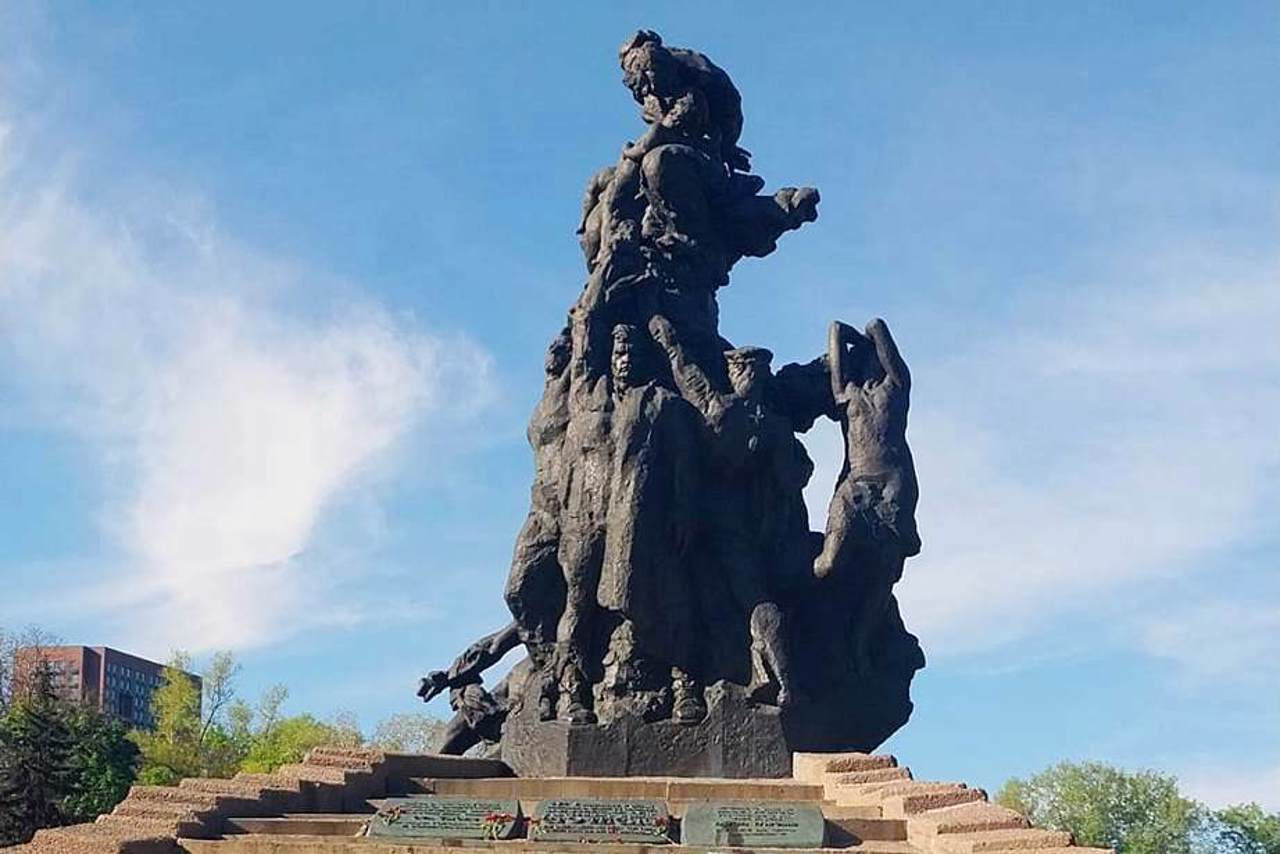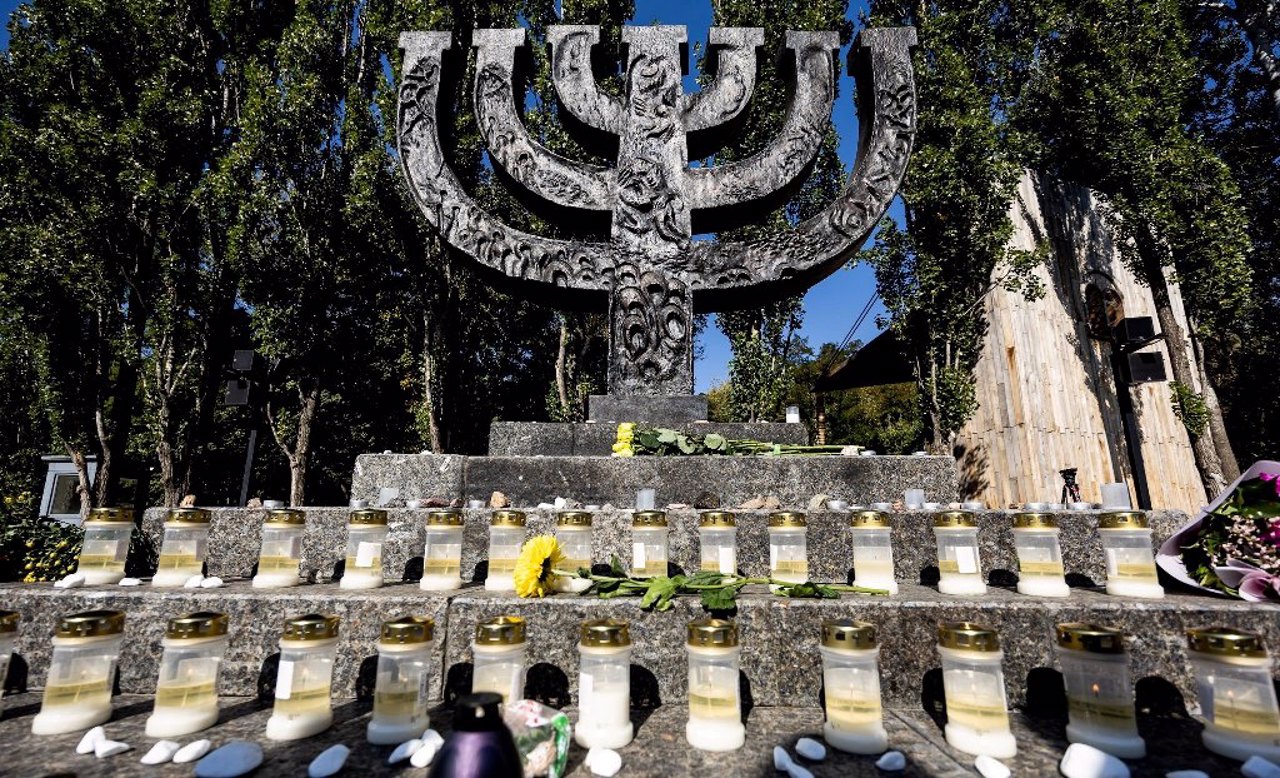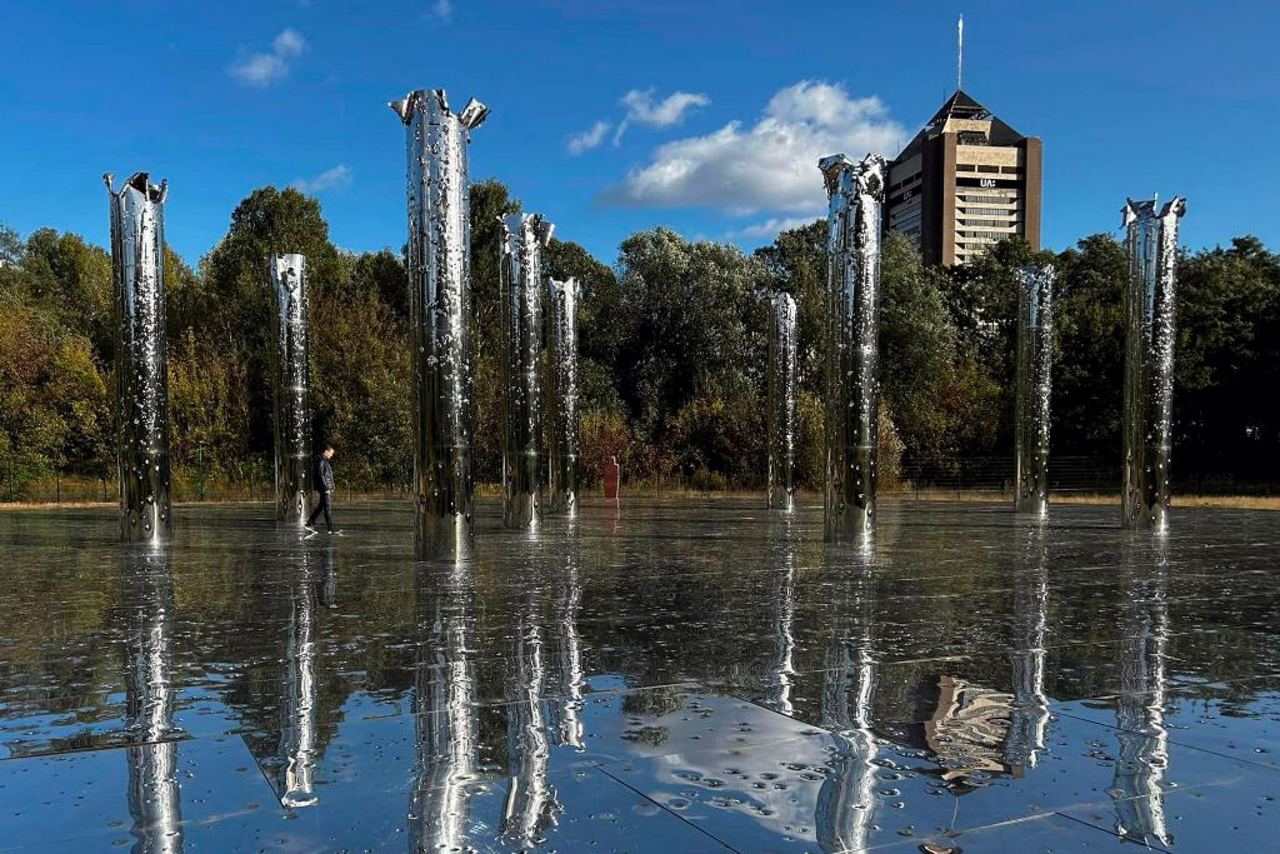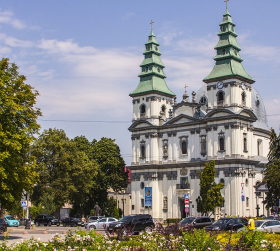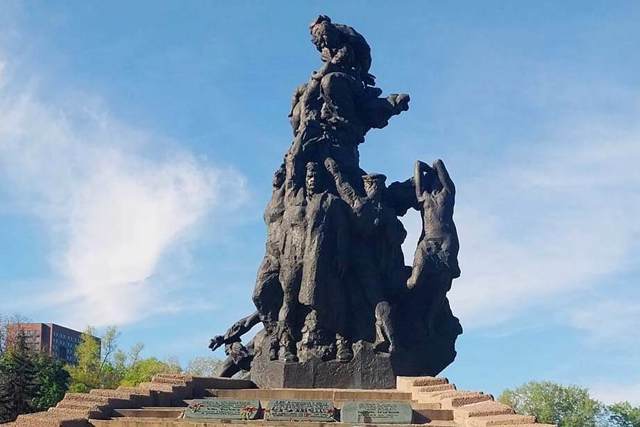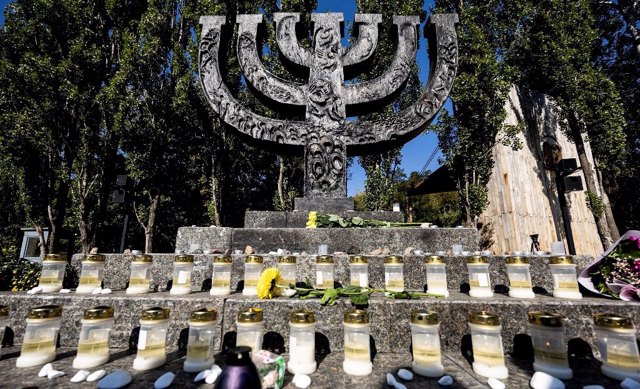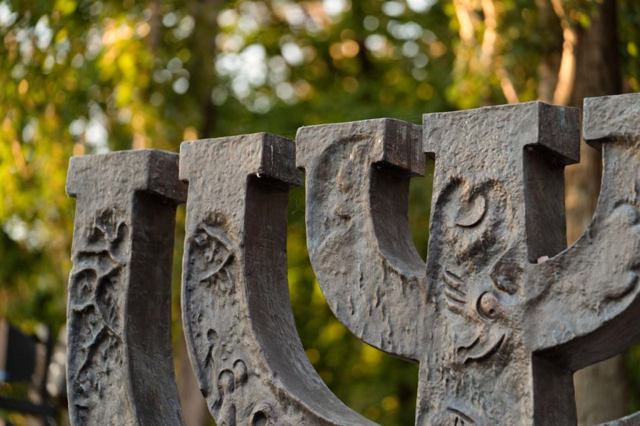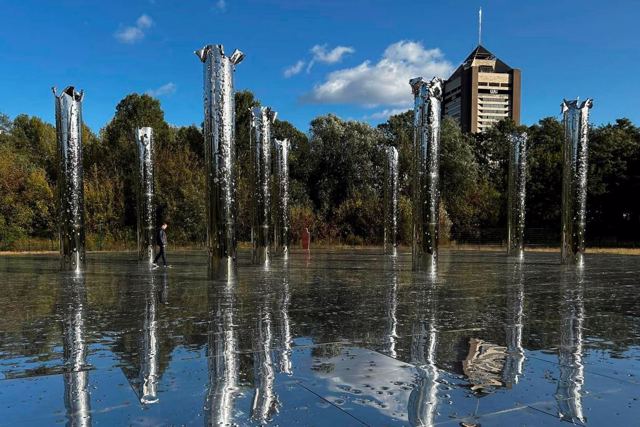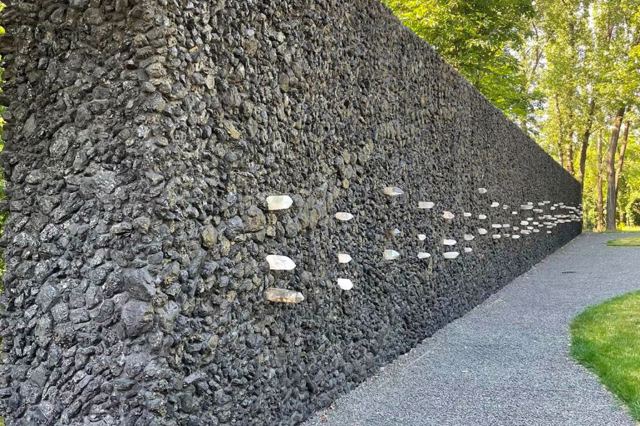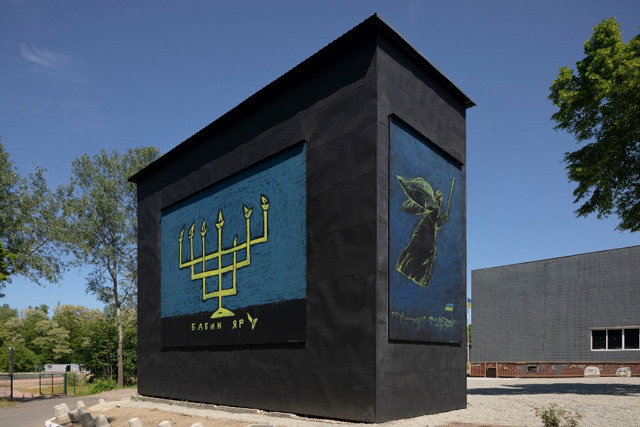Functional temporarily unavailable
Attractions of Ukraine
Attractions region
Attractions Kyiv
Babyn Yar National Historical and Memorial Reserve
Babyn Yar National Historical and Memorial Reserve, Kyiv
Historic area
Museum / gallery
Monument
General information about Babyn Yar National Historical and Memorial Reserve (Kyiv)
Babyn Yar in Kyiv is known throughout the world as a symbol of the genocide of the Jewish people. During the Nazi occupation of Ukraine, more than 100,000 civilians, prisoners of war, underground fighters, partisans, hostages, members of the OUN, mentally ill and other people were shot here. Now it is one of the most famous memorial sites associated with the Holocaust.
Deep between Syrets and Kurenivka in Kyiv, along the current Olena Teliha Street, has been known since the 15th century as the "Shalena Baba" tract. According to one version, this nickname was given to a local butcher who later sold these lands to a Dominican monastery.
A ramified 3.5-kilometer-long ravine stretches from the present Dorohozhytska metro station to the
Babyn Yar in Kyiv is known throughout the world as a symbol of the genocide of the Jewish people. During the Nazi occupation of Ukraine, more than 100,000 civilians, prisoners of war, underground fighters, partisans, hostages, members of the OUN, mentally ill and other people were shot here. Now it is one of the most famous memorial sites associated with the Holocaust. Deep between Syrets and Kurenivka in Kyiv, along the current Olena Teliha Street, has been known since the 15th century as the "Shalena Baba" tract. According to one version, this nickname was given to a local butcher who later sold these lands to a Dominican monastery. A ramified 3.5-kilometer-long ravine stretches from the present Dorohozhytska metro station to the Saint Cyril’s Church. In the upper part of the ravine, since the end of the 19th century, the construction of the Lukyaniv Jewish cemetery began (the office building has been preserved). During the Second World War, the natural topography of the Babyn Yar was supplemented with anti-tank ditches. They became the place of mass shootings and burials of Kyiv residents during 1941-1943. Only on September 29-30, 1941, the Nazis executed 33 thousand Jews here. In 1976, a monument to shot citizens and prisoners of war was erected near Babyn Yar, which for a long time remained the only monumental embodiment of the tragedy. In 1991, a memorial sign "Menorah" in the form of a Jewish ritual seven-century candlestick was installed directly at the burial site. In 2001, a monument to the dead children was opened. In 2007, the complex of monuments in the Babyn Yar tract was declared a national historical and memorial reserve. Since 2016, the Babyn Yar Holocaust Memorial Center has been building a large museum-memorial complex on the territory of the reserve. In particular, in 2020, the installation "Mirror field" was opened, in 2020 - the symbolic synagogue "A place for reflection", as well as the installation "Looking into the past" dedicated to the Kurenivka tragedy. Every year on September 29, mourning events take place in Babyn Yar. In December 2024, UNESCO included the Babyn Yar National Historical and Memorial Reserve on the International List of Cultural Properties under Enhanced Protection.
Бабин Яр у Києві відомий усьому світу як символ геноциду єврейського народу. В роки гітлерівської окупації України тут було розстріляно понад 100 тисяч мирних громадян, військовополонених, підпільників, партизанів, заручників, членів ОУН, психічнохворих та інших людей. Зараз це одне з найвідоміших пам'ятних місць, пов'язаних із Голокостом.
Глибокий між Сирцем та Куренівкою у Києві, вздовж нинішньої вулиці Олени Теліги, відомий з XV століття як урочище "Шалена Баба". За однією з версій, таке прізвисько мала місцева шинкарка, що згодом продала ці землі домініканському монастирю.
Розгалужений яр довжиною 3,5 кілометри тягнеться від нинішньої станції метро "Дорогожицька" до Кирилів ...
Бабин Яр у Києві відомий усьому світу як символ геноциду єврейського народу. В роки гітлерівської окупації України тут було розстріляно понад 100 тисяч мирних громадян, військовополонених, підпільників, партизанів, заручників, членів ОУН, психічнохворих та інших людей. Зараз це одне з найвідоміших пам'ятних місць, пов'язаних із Голокостом.
Глибокий між Сирцем та Куренівкою у Києві, вздовж нинішньої вулиці Олени Теліги, відомий з XV століття як урочище "Шалена Баба". За однією з версій, таке прізвисько мала місцева шинкарка, що згодом продала ці землі домініканському монастирю.
Розгалужений яр довжиною 3,5 кілометри тягнеться від нинішньої станції метро "Дорогожицька" до Кирилівської церкви. У верхній частині яру з кінця XIX століття почалося облаштування Лук’янівського єврейського цвинтаря (зберігся конторський будиночок).
Під час Другої світової війни природний рельєф Бабиного яру був доповнений протитанковими ровами. Саме вони стали місцем масових розстрілів і поховання мешканців Києва протягом 1941-1943 років. Лише 29-30 вересня 1941 року нацисти стратили тут 33 тисячі євреїв.
В 1976 році біля Бабиного Яру було споруджено пам'ятник розстріляним громадянам та військовополоненим, що тривалий час залишався єдиним монументальним втіленням трагедії. В 1991 році безпосередньо на місці поховання встановлено пам'ятний знак "Менора" у формі єврейського ритуального семисвічника. В 2001 році відкрито пам'ятник загиблим дітям.
У 2007 році комплекс пам'яток в урочищі Бабин Яр було проголошено національним історико-меморіальним заповідником.
З 2016 року Меморіальний центр Голокосту "Бабин Яр" розбудовує на території заповідника великий музейно-меморіальний комплекс. Зокрема, 2020 року відкрилася інсталяція "Дзеркальне поле", 2020 року – символічна синагога "Місце для роздумів", а також інсталяція "Погляд у минуле", присвячена Куренівській трагедії.
Щороку 29 вересня в Бабиному Яру відбуваються траурні заходи.
В грудні 2024 року ЮНЕСКО внесло Національний історико-меморіальний заповідник "Бабин Яр" до Міжнародного списку культурних цінностей, які перебувають під посиленим захистом.
Practical information about Babyn Yar National Historical and Memorial Reserve (Kyiv)
Last update
8/26/2025
| Categories | Historic area, Museum / gallery, Monument |
|---|---|
| Date of foundation | 2007 |
| Address |
Yuriya Illyenka Street, 44
Kyiv |
| Coordinates |
50.4706° N, 30.4491° E
|
| Phone | +380 44 235 3989, +380 67 766 1546, |
| babinyar@ukr.net | |
| Official site |
http://babynyar.gov.ua/ |
| Additional services |
Аccessibility information
According to the institution
Have you visited Babyn Yar National Historical and Memorial Reserve in Kyiv?
Add practical or descriptive information, photos, links
What to see, where to go next?

